50 Thesis Topics in Ophthalmology to Know What to Write About

Table of Contents

Ophthalmology Thesis Topics: What Should They Be?
Thesis topics in ophthalmology should represent solid research in the sphere on the basis of strong evidence. While writing a thesis, one should pay attention to the statistical measures in the field to address the methods and techniques of solving difficult medical tasks. Thesis topics in ophthalmology are significant for the examination of the urgent topics on eye diseases and the discovery of the means of treating the eye conditions.
Ophthalmologists have long been engaged in eye treatment, the study of physiology, but in recent years, science has made a huge leap forward. Today, these doctors create new methods of treatment, conduct scientific activities, trying to find the causes of the development of various diseases, work with congenital and acquired pathologies.
Ophthalmology Research Data to Think Over
If we talk only about statistics in America , then 24, 4 million Americans suffer from cataracts. By the age of 75, this figure reaches half the total population of America of this age. Glaucoma, in turn, affects 2.7 million Americans over 40 years of age.
These figures determine the demand for ophthalmologists in the labor market and the popularity of training in the specialty “Ophthalmology”. Innovative techniques, modern scientific knowledge, and equipment today make it possible to cure eye diseases, which 10 or 15 years ago deprived patients of sight forever.
That is why medical students are involved in scientific activities starting from college, and the successful writing of a dissertation is almost a guarantee of high professionalism of the graduate and his readiness to help people maintain the ability to see the world. Below we have collected 50 topics of dissertations in ophthalmology. Choose the most interesting to prove that you have the right to call yourself a doctor and treat people.
To begin with, due to the negative impact of computers and laptops, the majority of individuals experience eye pain and dry eye condition. This might be an important topic for discussion since it is estimated that millions of adults suffer from the dry eye. The controversies in ophthalmology have arisen over a long time concerning the etiology of dry eye and experience of pain. The evidence from other fields shows that alterations in the central nervous system exacerbate the irritative symptoms and eye pain. Sometimes, the patient can complain about chronic pain syndrome that is characterized by systemic pain.
Dry eye disease occurs in 5% to 35% of the world population and is more present in females. The condition has severe consequences for life quality negatively influencing visual activity, productivity at work, social interaction, and physical functioning. The sources reveal that individuals with dry eyes of the moderate and severe degree have similar either social or psychological life as people experiencing angina of the same degree or those who made hospital dialysis. The dry eye condition is connected with the disorder of the tear film, meibomian glands, violation of normal ocular surface, and inflammation of the eye surface. The disease is accompanied by the huge discomfort, disturbance of tear film, and visual difficulties that might lead to the damage of the ocular surface. Patients suffering from dry eye disease have problems with focus because of the tear film osmolarity and ocular surface inflammation.
Corneal sensation remaining intact is essential to keep the healthy ocular surface as well as quality and quantity of tears because corneal nerves have the direct trophic impact on maintaining the corneal epithelium. Corneal confocal microscopy (CCM) might be used to reflect the cornea involving the sub-basal nerve layer in people with dry eye disease. As a matter of fact, the condition can be triggered by the majority of mechanisms that result in the ocular irritation; however, it is still not understood what is the cause of dry eyes when the tears are normally produced and the ocular surface is moist enough.
To conclude, the discordant dry eye appears because of the tear production discordance and ocular surface staining. The processes in the central nervous system are interchangeably connected with the severe symptoms of eye strain and ocular surface damage. Further research should be done to relieve the symptoms and find the adequate treatment of the disease.
50 Ophthalmology Dissertation Topics to Choose From
Feel free to check the following list of topics.
- Surgical Treatment of Exophoria Complicated by Horizontal V-Syndrome;
- Possibilities of Detecting Early Disturbances in Eye Hydrodynamics in Patients with Cataracts and Ocular Manifestations of Pseudoexfoliation Syndrome;
- Ultrasound Biomicroscopy in the Diagnosis of Pathology of the Extreme Periphery of the Fundus;
- Experimental Clinical Rationale for the Use of Nd: Yag Laser with a Wavelength of 1.44 Microns in the Technology of Anterior Capsulorhexis and Remote Hemostasis;
- Medico-Technological System of Surgical Treatment of Progressive Keratectasia of Various Origins;
- Subthreshold Micropulse Laser Treatment with a Wavelength of 577 Nm in the Treatment of Central Serous Chorioretinopathy;
- The Clinical and Experimental Rationale for the Combined Use of Neodymium Ion 1.44 Microns and Helium-Neon 0.63 Microns Lasers in Cataract Surgery;
- Yag-Laser Activation of Trabeculae in the Treatment of Patients with Primary Open-Angle Glaucoma;
- The Study of the Effectiveness of Micropulse Laser Irradiation with a Wavelength of 577 Nm in Macular Edema After Surgical Removal of Idiopathic Epiretinal Membrane;
- The Clinical and Experimental Rationale for Optimized Uv-Crosslinking Technology in the Treatment of Keratoconus;
- Clinical And Laboratory Substantiation of the Use of Orthokeratology Lenses in Progressive Myopia in Children;
- Optimization of Surgical Treatment of Retinal Vein Thrombosis Outcomes;
- The Results of Surgical Correction of High Myopia with Anterior Chamber Phakic Intraocular Lenses;
- The System of Treatment and Rehabilitation Activities in Patients with Paralytic (Paretic) Strabismus;
- Surgical Treatment of Keratectasia of Various Origins by the Intrastromal Keratoplasty Method with Polymeric Corneal Segments;
- Comparison of Spectral Optical Coherence Tomography and Confocal Scanning Laser Ophthalmoscopy in the Diagnosis of Primary Glaucoma;
- Clinical and Functional Results of Surgical Treatment of Rhegmatogenous Retinal Detachments Using the Method of Peri-Basal Vitrectomy;
- The Modern System of Diagnostics, Treatment, and Organization of High-Tech Ophthalmic Care for Children with Active Stages of Retinopathy of Prematurity;
- Limbal Co-Transplantation in the Prevention of Rejection of Donor Corneas in High-Risk Keratoplasty;
- Vascular Disorders in the Anterior Part of the Eye at Different Stages of Pseudoexfoliation Syndrome;
- Induction of Posterior Vitreous Detachment in the Surgical Treatment of Retinal Detachment;
- Combined Phacoemulsification Method in Patients with Operated Glaucoma;
- Features of the Quality of Life of Patients with Cataract and Glaucoma Before and After Surgical Treatment;
- Ophthalmologic Diagnostics and Tactics of Treatment of Cranio-Orbital Injuries in the Acute Period of Traumatic Brain Injury;
- Features of Pupillary Reactions and Regional Hemodynamics of the Eye in Patients with Diabetes Mellitus with Different Levels of Glycemia;
- Prevention and Treatment of Corneal Lesions in Endocrine Ophthalmopathy;
- Antibacterial Drugs in the Prevention of Complications of Cataract Phacoemulsification;
- Possibilities for Stimulating the Secretion of Tears in Patients with Hypolacrimia in the “Dry” Eye Syndrome;
- Diagnosis and Treatment of Actinomycotic and Mycotic Diseases of the Lacrimal Ducts;
- Study of the Clinical Efficacy of Diaphragm Glasses;
- The Study of Sclera Rigidity In Healthy and Glaucomatous Eyes;
- Clinical and Instrumental Diagnosis of Malignant Tumors of the Orbit;
- Ophthalmotonus Biorhythms in Health and Glaucoma;
- Clinical And Laboratory Diagnosis of Early Stages of Keratoconus;
- The Clinical and Functional Rationale for the Tactics of Surgical Treatment with a Combination of Retinal Detachment with Lens Opacities;
- Combined Surgical Treatment of Retinal Detachment in the Advanced Stage of Proliferative Diabetic Retinopathy;
- Mathematical, Experimental and Clinical Rationale for the Prevention and Correction of Corneal Astigmatism and Capsular Bag Pathology in Cataract Surgery;
- The Method of Combined Treatment of Progressive Myopia;
- Modification of Sinusotomy in the Treatment of Primary Open-Angle Glaucoma;
- Optimization of Diagnosis and Surgical Treatment of Involutional Entropion of the Lower Eyelid;
- Peripheral Vortical Dystrophies and Retinal Detachment in Pregnant Women: Diagnosis, Treatment, Choice of Method of Childbirth;
- Indices of Intraocular Pressure of a Newborn Child Due to the Morphological Features of the Drainage System of the Eye at Different Periods of Gestation;
- The Use of Silicone-Hydrogel Contact Lenses in the Treatment of Ulcerative Keratitis;
- Prolonged Pharmacotherapy of Glaucomatous Optic Neuropathy;
- Modern Aspects of Viscosurgery in Ophthalmology;
- Current Possibilities for the Prevention and Treatment of a Blepharo Conjunctival Form of Dry Eye Syndrome of Demodectic Etiology;
- An Experimental Study of the Effectiveness of Cell Transplantation in Post-Traumatic Pathology of the Retina;
- Vitreoretinal Changes in Case of Eye Injury by Splintering;
- Diagnosis and Treatment of Optic Nerve Hypoplasia in Children;
- Ocular Manifestations of Antiphospholipid Syndrome.
10 Resources to Find More Information on Ophthalmology Topics
Here are some scientific journals websites you may look through.
- American Journal of Ophthalmology Case Reports
- Clinical Ophthalmology
- Current Trends in Ophthalmology
- Digital Journal of Ophthalmology
- International Journal of Keratoconus and Ectatic Corneal Diseases
- International Journal of Ophthalmology & Visual Science
- IP International Journal of Ocular Oncology and Oculoplasty
- Journal of Current Glaucoma Practice
- Medical Hypothesis, Discovery, and Innovation in Ophthalmology
- Neuro-Ophthalmology & Visual Neuroscience
5 References to Write an Ophthalmology Thesis
- Bron, A. J., Tomlinson, A., Foulks, G. N., Pepose, J. S., Baudouin, C., Geerling, G., … & Lemp, M. A. (2014). Rethinking dry eye disease: a perspective on clinical implications. The ocular surface, 12(2), S1-S31.
- Dry eye disease: risk factors and selecting treatment. (2015). The Pharmaceutical Journal. http://dx.doi.org/10.1211/pj.2015.20069420
- Shtein, R. M., Harper, D. E., Pallazola, V., Harte, S. E., Hussain, M., Sugar, A & Clauw, D. J. (2016). Discordant dry eye disease (an American Ophthalmological Society thesis). Transactions of the American Ophthalmological Society, 114.
- Sullivan, B. D., Crews, L. A., Messmer, E. M., Foulks, G. N., Nichols, K. K., Baenninger, P., … & Lemp, M. A. (2014). Correlations between commonly used objective signs and symptoms for the diagnosis of dry eye disease: clinical implications. Acta ophthalmologica, 92(2), 161-166.
- Yun, C., Kang, S., Kim, H., & Song, J. (2012). Prevalence of Dry Eye Disease among University Students. Journal Of The Korean Ophthalmological Society, 53(4), 505. http://dx.doi.org/10.3341/jkos.2012.53.4.505
Hopefully, you will find our article useful and be able to write the best ophthalmology dissertation ever! Despite choosing a topic, the thesis writing process takes a lot of time to take the other steps – brainstorming, research, note-taking, outlining, structuring, drafting, writing itself, formatting, proofreading, etc. If you want to save you time or nerves, you know what to do. Right? DoMyPapers.com is 24/7 open to you.

Too busy to write your paper by yourself?

Dr. D. Y. PATIL VIDYAPEETH, PUNE (DEEMED TO BE UNIVERSITY)

- You are here :
- Departments
- Ophthalmology Department

Department of Ophthalmology
Academics extension and research, dissertation.
- List of Publications
- Research Outcomes
- PO & CO Analysis (UG and PG)
- Alumni Placement
- Wall Magazine
- Teaching Programme
- Integrated Teaching
- Dissertations
- Achievements and Awards (Faculty, PG and UG Students)
- Conferences/ CMEs/ Workshops Organized
- Conferences/ CMEs/ Workshops Attended by Faculty and Students
- Best Practices
- Other Information
Dr. D. Y. Patil Medical College, Hospital & Research Centre, Sant Tukaram Nagar, Pimpri, Pune 411018 Maharashtra, India.
Social Media
- Non Visual Desktop Access(NVDA)
- Shortcut Keys
Important Link
- Privacy Policy
- Terms and Conditions
Copyright ©2024 | All Rights Reserved By Software Development Cell, Dr. D. Y. Patil Vidyapeeth, Pune

Make An Appointment


Hon’ble Chancellor Vice Chancellor Registrar Principal Vice Principal Medical Superintendent
Anaesthesiology Anatomy Biochemistry Cardiac Anaesthesia Cardiology Cardio vascular & Thoracic Surgery Community Medicine Dermatology (Skin & VD) Emergency Medicine Endocrinology ENT, Head & Neck Surgery Forensic Medicine Gastroenterology
General Medicine General Surgery Interventional Radiology Medical Oncology Microbiology Nephrology Neonatology Neurology Neurosurgery Nuclear Medicine Obstetrics & Gynecology Ophthalmology Orthopedics Pathology
Public Health Research Unit Medical Education MCI Nodal Center Hospital Administration
Pediatrics Pediatric Neurology Pediatric Surgery Pharmacology Physical Medicine & Rehabilitation Physiology Plastic & Reconstructive surgery Psychiatry Radiation Oncology Radiology/Radio-diagnosis Respiratory/Pulmonary Medicine Surgical Oncology Urology
Under Graduate
Post graduate.
Post Doctoral Diploma Courses Public Health Ph.D Hospital Administration Fellowship Courses Allied Courses
Feedback Analysis 2015-20 Feedback Analysis 2021
Syllabus of Courses offered
Under Graduate Post Graduate Post Doctoral Fellowship Courses Ph.D Allied Courses
- KLE Advanced Simulation Centre & Clinical Skills Lab
- Cadaveric Skill Lab
- NIRF Prescribed Format
- JNMC NIRF 2018
- JNMC NIRF 2019
- JNMC NIRF 2020
- JNMC NIRF 2021
- JNMC NIRF 2022
- JNMC NIRF 2023
- JNMC NIRF 2024
- KLE Dr. PBK Hospital & MRC
- KLE Dr.PBK Hospital
- JNMC Women’s & Children’s Health Research Unit
- KLE Society
- Sports Complex
- Convention Center
- Musical Garden
- Shivalaya Temple
- Ganesh Temple
- Attendance Dashboard
- Scientific Society
- Student Association
- Kannada Balaga
- Institutional Ethics Committee
- Internal Complaint Committee
- Anti-Ragging
- Para Medical Course
- Capability Enhancement
- Faculty Login
- Student/Parent Login
- Dissertations
- M.B.B.S PHASE III – PART- I
- Ophthalmology
U.G/ M. D / M. S Dissertation: Ongoing
U.G/M.D/M.S Dissertation: Completed
Opthalmology
Request a quote.
- Hon’ble Chancellor
- Vice Chancellor
- Vice Principal
- Medical Superintendent
- Biochemistry
- Forensic Medicine
- Microbiology
- Pharmacology
- Community Medicine
- Obst & Gynecology
- Orthopaedics
- Skin & VD
- Pulmnonary Medicine
- Anaesthesiology
- Post Doctoral
- Endocrinology
- Department Public Health
- Research Unit
- Medical Education
- MCI Nodal Center
- Diploma Courses
- Department of Public Health
- Hospital Administration
- Govt-Approval
- KLE Dr. PBK Hospital & MRC
- KLE Dr.PBK Charitable Hospital
- PHC & UHC

- Becoming a Member
- Membership Dues
- Theses Submission
- Membership List
- Membership Directory
- Historical Membership List
Thesis Guidelines for the American Ophthalmological Society
Submit your thesis here.
I. INTRODUCTION
The American Ophthalmological Society (AOS), founded in 1864, is the oldest American specialty society that has functioned without interruption into the 21st century. Election to the AOS is intended for the present or future leaders of American and International Ophthalmology, and membership requires the candidate to demonstrate scholarship in the form of a thesis. This thesis should be an original contribution toward the advancement of the science and art of ophthalmology. A thesis is more than a routine scientific paper.
Upon the recommendation of peers and following an evaluation of accomplishments, candidates for membership are invited to write a thesis. These guidelines are intended to help with the preparation of a thesis of which both the candidate and the Society will be proud. Detailed instructions on format, style, and manuscript preparation are included.
Selection of Topic
A thesis is a position or proposition, advancing an original point of view and supported by research or argument. It is a demonstration of scholarship that presents new findings or provides strong evidence to confirm or deny the value of a concept, procedure, or technique.
Appropriate topics for a thesis include, but are not limited to, clinical, applied, or basic research; observational and population-based studies; medical services research; bioethics position papers; laboratory biomedical research; innovative surgical techniques; administrative issues, and other investigations that advance the science and art of ophthalmology. The most important factors are: (1) that the impetus and creativity behind the research be predominantly that of the candidate, and (2) that the work be new and original and not previously published elsewhere.
The purpose of the thesis should be clearly articulated. Most theses involving biomedical research should include a hypothesis that is tested in the research. Theses should also include reviews of background material, detailed methodology, and succinct presentations of results. A thorough discussion should follow and conclusions should be formulated. In general, case reports are not acceptable, but case series may be included to prove or disprove the hypothesis. Prior publication by any of the authors of material that is obviously similar to or substantially overlapping that contained in the thesis is not acceptable. However, the inclusion of portions of any of the author’s previously published research efforts may be employed in the production of a thesis and referenced as material that supports or contradicts the premise of the thesis.
Individuals may submit a thesis based on a significant portion of a multicenter study. The AOS permits a multi-authored thesis, reflecting the present pattern of research. However, the requirement of primary authorship of the thesis candidate must be met even though many others may meet and be listed as coauthors or have contributed in data collection or monitoring roles. The advisability of including such material in a thesis should be discussed with the Principal Investigator of the study and with the Executive Vice President before embarking on the project. A written agreement between all contributors should be signed to avoid potential miscommunications.
Thesis Proposal
Candidates are asked to submit a proposal of their thesis in abstract form to the AOS office by the February following their invitation, which will be forwarded to the Committee on Theses for review and feedback. Your proposal should be brief, no more than one page, describing your research plan. Guidelines for your thesis proposal are as follows:
1. Concerns a topic that is relevant to ophthalmologists.
2. Includes at least one well-designed study with a clearly stated hypothesis. Well-designed studies can be experimental laboratory investigations, animal or clinical research, cross-sectional studies, case-control or case-cohort studies, extraction of data from databases with analysis, clinical trials, multi-center clinical trials, systematic reviews, meta-analyses.
3. Adheres to the highest current standards for scientific investigations that are pertinent to the proposed study. Examples of such standards are CONSORT, PRISMA, Delphi, Cochrane, registration on clinicaltrials.gov if appropriate.
4. Obtains permission of all proposed co-authors at the time of abstract submission.
5. Confirms that the design, literature review, analysis, provision of materials and patients, and writing were the responsibility of the candidate. Clearly notes the contributions of co-authors. Discloses conflicts of interest.
6. Calculates that there are adequate numbers of subjects to reach valid conclusions.
7. Details the methods that will be used to study each hypothesis.
8. Provides an extensive background for the proposed study, including prior research by others and, often, the candidate. Background includes why the research question is meaningful to ophthalmologists, what the pipeline of research is for this particular question, where the current work is positioned in the research stream, how the candidate assesses the importance of the work in the totality of the research stream.
9. Certifies that the work has not been previously submitted for publication, is being proposed specifically to qualify for membership in the AOS and will follow the publication guidelines of the AOS.
10. Respects the eclecticism of the AOS by making the thesis comprehensible to ophthalmologists from diverse backgrounds.
11. The committee on theses will review each proposal and may provide written feedback and ask questions about the proposal or suggest revisions. Candidates will be asked to respond in writing to the committee.
DOWNLOAD THESIS PROPOSAL GUIDELINES HERE
DOWNLOAD REQUIRED THESIS PROPOSAL TEMPLATE HERE
Thesis length is left to the author's discretion. Originality and quality are more important than the number of pages. The length of theses published in the AJO and Transactions of the AOS ranged from 20 to 132 printed pages.
A candidate is given 3 years to prepare a thesis, with the next thesis submissions due by January 1 of each year. In fairness to candidates who submit their thesis on time, and according to the Bylaws of the Society, no extensions are granted. A thesis may be submitted at any time for consideration prior to the deadline and theses are now being reviewed when submitted rather than at only one time of the year.
Underestimating the Time Required
The deadline for submission of theses is firm. One of the most common errors is a delay in initiating the task. Completing the project with time to spare is recommended.
Sources of Assistance
Authors are encouraged to seek assistance from a variety of potential sources.
Sponsors can be valuable sources of assistance in the planning, preparation, and review of theses. It is important to consult with one or both of them about potential thesis topics and outlines and to communicate progress at selected intervals. A near-final draft should be provided to both sponsors. Respected colleagues may also be asked to review a draft of theses. It is very important to allow adequate time for reviewers’ comments and for subsequent revisions.
Questions or Clarification
Any questions about structure and format that are not answered in these Guidelines should be directed to the Executive Vice President.
Review of Prior AOS Theses
A review of past theses related to the candidate’s topic is helpful. Theses are published in the AJO and in the Transactions of the AOS. Theses published in 2001 and later are available at www.AOSonline.org and all AOS theses and papers since 1865 are available via a link to PubMedCentral that is provided under Transactions at AOSonline.org. Starting in 2018, accepted AOS theses are also published in the AJO.
Editorial Assistance
Although now published in the AJO, the AOS theses have a particular style and authors are required to format the manuscript specifically for the AOS. Professional editing is appropriate and frequently helpful as the authors are required to prepare a publication ready manuscript.
Biostatistician
For theses requiring statistical analyses, the use of a biostatistician or epidemiologist prior to undertaking the project can avoid later problems. The methodology, end points, and planned analysis should ideally be determined prior to collection of data.
Conflict of Interest
Candidates who disclose that they are paid consultants or owners of a company and consider a thesis proposal for research to evaluate efficacy of a drug or device from such a company, risk that the reviewers may find that the author cannot be appropriately objective.
II. FORMAT AND STYLE
Prepare the thesis in or convert it to Microsoft Word. Submit the single-spaced manuscript and figures through the AJO online submission portal. If accepted, the thesis is published in the AJO, and also in the Transactions on the AOS website.
Include the full name and academic degree(s) and institution or location of each author in the byline. It is expected that the candidate qualify as the first and primary author and the other names should appear to reflect their contribution to the thesis. All authors should meet Authorship criteria; alternatively, contributors should be listed in the Acknowledgment. Provide the complete postal address, email, and phone number of the candidate for future correspondence. Funding and disclosure information should be submitted under Acknowledgments and not on the title page (see below).
Table of Contents
Include a Table of Contents for theses over 20 pages long. For items that are uploaded before the Title Page, such as the Abstract, you may use i, ii, etc. up to the Title Page, which is page 1.
Structured Abstract
A structured abstract of no more than 250 words is required. The abstract should be uploaded separately 4 the manuscript text file. Format as follows:
State the major hypothesis or objective of the study. This is generally one sentence beginning with, “To…..”
Describe the design of the study, noting randomization, masking, criteria standards, and temporal direction (retrospective or prospective) as applicable. Indicate the study setting (eg, institutional, multicenter, primary care, referral practice). Identify the patients or other participants by noting selection procedures, entry criteria, and numbers. Specify the intervention procedures and the main outcome measures.
Briefly summarize the principal results obtained. Results must be accompanied by data with confidence intervals and the exact level of statistical significance. Results must also identify any significant limitations or qualifications of the data and give suitable emphasis to positive and negative findings.
Conclusions
State the conclusions directly supported by the data, describe the clinical or research applications, compare to the prior literature, and indicate limitations of the study.
Manuscript Sections
In general, the text of the manuscript should follow the sections of the Abstract and include an INTRODUCTION to the study, including a clearly articulated hypothesis in the final paragraph; METHODS AND/OR MATERIALS sufficient for others to repeat the study; RESULTS that are limited to this specific study; and a DISCUSSION that answers the research related to the hypothesis, reviews pertinent and/or conflicting literature and establishes the importance, limitations and recommendations based on this study. Because of the length of some theses, a CONCLUSION section is permitted.
The first paragraph of the METHODS section should indicate whether the IRB approval was prospective (before the study began) or retrospective. Indicate precisely what the IRB approved. Name the IRB that approved the research or provide a statement and rationale as to why the named IRB waived approval. Indicate proper informed consent for both the treatment and participation in the research; HIPAA compliance, Clinical Trials registration, number, and location; and Institutional Animal Care and Use Committee guidelines. If the IRB waived the need for approval of this research, then indicate adherence to the Declaration of Helsinki and all federal or state laws in your country. Authors cannot make the decision as to whether IRB approval is needed; your IRB should make that decision and provide a waiver if they feel it does not require IRB approval.
Pagination and Margins
Manuscripts should be typed single-spaced and right margins should be unjustified. Pages should be numbered consecutively with page numbers in the lower right corner. Line numbers must be inserted in the left margins of each page.
Text font should be 10-point Times New Roman.
Headings Fonts
Four levels of font headings are used in the text. These headings are demonstrated below. The first level of font heading in the text should be used for the headings Introduction, Methods, Results, and Discussion.
HEADING 1: BOLD, UPPERCASE, FLUSH LEFT
- Font: Times New Roman
- Paragraph Spacing: 6pts before, 2pts after
- Line Space: Single
HEADING 2: BOLD UPPERCASE, FLUSH LEFT
Heading 3: Bold, Mixed Case, .1" Indent
- .1" left indent
- Paragraph Spacing: 2pts before, 1pts after
Heading 4: Bold, Mixed Case, Indented, followed by a period and regular text.
- Regular text continues 4 here.
- Indentation: Special: First Line: .2"
Style Guide
Use the most current American Medical Association Manual of Style: A Guide for Authors and Editors, 10th edition, 2007 as a guide for style. Of particular importance in the style manual are the sections on abbreviations of clinical and technical terms and units of measure (Chapter 14) and statistics (Chapter 20). The book is available at some bookstores or medical libraries.
Rounding Off Digits
Round off the digits to the right of the last significant digit. If the digit to the right of the last significant digit is less than 5, the last significant digit is not changed. If the digit is 5 or greater, the last significant digit is rounded up to the next higher digit. For example, 47.746 is rounded to 47.7 years, 47.763 is rounded to 47.8 years. (See sections 18.4.2 and 19.7.1 in the AMA Manual of Style.)
Numeric Equivalents and Percentages
Numeric equivalents must precede all percentages. Percentages are not allowed for sample sizes of 10 or less.
Example : Of 80 patients, 20 (25%) had retinopathy.
Designate probability, using an italicized P but no zero before the decimal point. When P values are used, the actual P value (eg, P=.032) is preferred to an inequality (eg, P<.05).
Abbreviations
Restrict abbreviations to those that are widely used and understood by all ophthalmologists. Avoid using abbreviations that have meaning only in the context of the thesis. The first time a term is abbreviated, the term must be written out in full followed by the abbreviation in parenthesis; for example, nonsteroidal anti-inflammatory drug (NSAID). Do not use periods after abbreviations.
Number of References
The number of references cited is at the author’s discretion, and authors are solely responsible for precise references in the correct format. In the past, this number has ranged 4rom 26 to 586 with an average of 120 references. The references must be in current AMA reference format and should have been reviewed and recommended by the author and selected for their quality, pertinence, and thorough historical significance relative to the topic. PubMed offers a useful reference checker at http://www.ncbi.nlm.nih.gov/pubmed/citmatch .
Citations in the Text
References should be cited in the text, tables, or figures in consecutive numerical order and designated by superscript Arabic numerals. Reference numbers are placed after commas and periods but before colons and semicolons. For a two-author reference within the manuscript text, list both author names; for three or more authors in the manuscript, list the first author followed by “and associates,” “and colleagues,” or “and coworkers.” Do not use “et al.”
Examples: Smith and coworkers 4,5 reported. Findings were as follows 5-8 :
References should be numbered consecutively in the text and in the reference list. If you use an automated reference numbering software (eg, Endnote or Reference Manager) the linkage must be turned off. The references must be verified by the author(s) against the original documents. PubMed offers a useful reference checker at http://www.ncbi.nlm.nih.gov/pubmed/citmatch .
Listing of References
References to journal articles should follow the current AMA format and include:
1) Authors' surnames and initials (list 6; for more than 6 authors, list the first 3 followed by "et al.")
2) Title of Article
3) Journal name in italics (as abbreviated in PubMed)
5) Volume number
6) Issue number
7) Inclusive page numbers
References to books should include:
1) The author or authors
2) Chapter title (if any)
3) Editor or editors (if any)
4) Book title
5) Edition (other than the first)
6) City of publication
7) Publisher
8) Copyright year
9) Inclusive pages of the chapter or section cited
Journal article: Robinson MR, Reed G, Csaky KG, Polis MA, Whitcup SM. Immune-recovery uveitis in patients with cytomegalovirus retinitis taking highly active antiretroviral therapy. Am J Ophthalmol 2000;130(1):49-56.
Journal article with organization as author: The Cardiac Society of Australia and New Zealand. Clinical exercise stress testing: safety and performance guidelines. Med J Aust 1996;164(5):282-284.
Book: Rootman J, Stewart B, Goldberg RA. Orbital surgery: a conceptual approach. Philadelphia: Lippincott-Raven, 1994:1-394.
Book chapter: Macsai MS, Mannis MJ, Huntley AC. Acne rosacea. In: Mannis MJ, Macsai MS, Huntley AC, editors. Eye and skin disease. Philadelphia: Lippincott-Raven, 1996:335-341.
A reference to a study that has been accepted for publication but is not yet published or reference to an Epub article should be identified as "forthcoming" rather than as "in press." The reference should name the journal or other publication in which the study will appear.
Unpublished data, such as studies in preparation or submitted for publication, posters, and unpublished abstracts the reader cannot retrieve in a literature search, are to be incorporated parenthetically in the text.
Association for Research in Vision and Ophthalmology (ARVO) and other abstract references are discouraged. If used, ARVO abstract citations should appear parenthetically within the text, not as bibliographic references, in the exact format recommended by ARVO. Citations should include: (1) name of first author, (2) "IOVS", (3) year, (4) volume number, (5) "ARVO E-Abstract", and (6) program number. Eg., (Roska BM, et al. IOVS 2002;43:ARVO E-Abstract 1415).
Personal communications should be cited parenthetically in the text, as in this example: (Evans DW, written communication, September 1, 1997). The Corresponding Author should provide authorization for use of this personal communication.
Internet references should be limited to important Full-Length articles that are not available in print or have been updated on the Internet since initial print publication. If a print reference is available, it should be used. The online reference should be listed with complete information including title and authors with the addition of the URL address and accession date. The URL address and availability must be confirmed again with any revision submission. Because Internet articles frequently are not available at a future date, the authors must make a print copy of the material they are referencing 4rom the Internet, hold it indefinitely, and provide it to the AOS at any time in the future. Do not use ePub information if in print.
Internet Reference: International Committee of Medical Journal Editors. Uniform requirements for manuscripts submitted to biomedical journals. Available at http://www.icmje.org . Accessed June 12, 2012.
Acknowledgments / Disclosure
The American Ophthalmological Society requires the thesis candidate to accept full responsibility as the primary author for all aspects of the submission; however, multiple authorship is encouraged to accurately reflect the contributions of each author. Enhanced disclosure information is required 4rom every author in a specific format. The following information should appear, in the order indicated (labeled A through D), in the Acknowledgment section of the thesis (just prior to the References). The information will appear in the AJO publication, as well as the Transactions of the American Ophthalmological Society . This information should not appear on the Title page of the manuscript or in the Methods section of the manuscript.
Use the Following Template for the Acknowledgment:
A. Funding/Support (including none) : any government and non-government support must be acknowledged.
B. Financial Disclosures : The Disclosures should capture the essence of the information contained in the AOS modification of the International Committee on Medical Journals Disclosure Form linked below. Provide all disclosures now or in the previous two years that relate to any commercial companies or devices employee, consultant, advisory, or ownership positions, and whether unpaid, paid directly to any of the authors, or paid to institution of the authors; speaker bureaus, lecture fees; grant support, equity payments; patents; advisor to investment companies; and expert witness testimony. Do not state, "no financial conflicts" as this is not what is requested in this section, but rather all "financial disclosures" are required, and should be consistent with the ICMJE disclosure forms. If you have no financial disclosures, you may state this.
Please complete the AOS Thesis Author Disclosure Form. (http://www.aosonline.org/assets/PDF-Docs/Thesis-Guidelines/thesis_author_disclosure_form.doc)
C. Contributions of Authors in each of these areas : design and conduct of the study collection, management, analysis, and interpretation of the data; and preparation, review, or approval of the manuscript. After each component, provide author initials in parentheses, SAMPLE: Contributions of Authors: Design of the study (AB, CD, EF); Conduct of the study (AB, EF, GH), etc. Each author must have a specific role in the manuscript however, the thesis candidate must have an identifiable contribution to each component of the thesis. Overall management/supervision of a laboratory alone or a position of chair alone does not constitute an authorship role.
Please complete the. AOS Thesis Contributions of Authors and Sponsors Form. (http://www.aosonline.org/assets/PDF-Docs/Thesis-Guidelines/thesis_author_contribution_form.doc)
D. Other Acknowledgments: Statisticians and medical writers or industry writers might fulfill the criteria for authorship of the thesis and should be recognized in that role. Otherwise recognize statistical consultation, medical writers or industry writers in the acknowledgment. Include the name and affiliation of the individual. The AOS does not accept theses that do not accurately reflect who wrote the content. Editorial assistants, photographers, artists, laboratory associates, and others who simply assist in preparation of the theses should not to be acknowledged, however valuable their service. Limit personal acknowledgment and include only professional colleagues involved in the thesis.
Figures and Legends

100 Ophthalmology thesis/dissertation topics for MD/DNB. More than 100 high quality and recent thesis topics to choose from for Post Graduate medical student pursuing MD/MS or DNB ophthalmology. Not only thesis topics but also we provide help in writing thesis including review of literature, Statistics and discussion along with plagiarism check.

1. Visual outcome in closed globe injury – A prospective study Study of ocular changes in pregnancy.
2. Comparative study of surgically induced astigmatism with frown-shaped scleral incision vs straight scleral incision with backward extension perpendicular to limbus in manual small incision cataract surgery.
3. Age related macular degeneration prevalence and risk factors- a cross sectional study.
4. “Evaluation of IOP, refraction, anterior chamber depth, macular thickness and specular microscopy post ND YAG laser in patients with posterior capsular opacification”.
5. “Evaluation of Dry Eye in Patients Undergoing Phacoemulsification Cataract Surgery.”
6. Assessment of astigmatism after temporal incision in cataract surgery with phacoemulsification technique & its correlation by limbal relaxing incision.
7. To compare complications of cataract surgery in cases of senile cataract with PXF syndrome and senile cataract without PXF syndrome.
8. Screening of corneal topographic changes in patients with various allergic keratoconjunctivitis.
9. A study on prevalence of ocular diseases in school going children.
10. A comparative study of a modified, sutureless, no glue v/s sutured conjunctival autograft transplantation in treatment of primary pterygium.
11. Clinical profile of primary open angle glaucoma and its association with diabetes mellitus.
12. Clinical profile of ocular morbidities among adult HIV infected patients.
13. Clinical profile and visual outcome among ocular trauma patients at tertiary care Hospital.
14. Incidence of retinopathy of prematurity among premature babies born at a tertiary care hospital – A longitudinal Study .
15. Prevalence of Dry Eyes in Diabetic and Diabetic Retinopathy
16. Assessment of safety of Retropupillary Iris claw Intraocular lens as a Viable Option in Surgical Aphakia.
17. A Study of donor corneal tissue evaluation by slit lamp microscopy and specular microscopy.
18. Study of systemic factors affecting Diabetic Retinopathy in Type II Diabetes Mellitus.
19. Quantification of the Corneal Astigmatism following Extracapsular Cataract Extraction VS Small Incision Cataract Surgery with Intraocular Lens Implantation – A Randomized Controlled study.
- Surgical Treatment of Keratectasia of Various Origins by the Intrastromal Keratoplasty Method with Polymeric Corneal Segments.
- Comparative study of goldmann applanation tonometer with noncontact autotonometer in myopia .
22. Clinical and Functional Results of Surgical Treatment of Rhegmatogenous Retinal Detachments Using the Method of Peri-Basal Vitrectomy
23. A clinical study to evaluate the results of toric intraocular lens implantation in cases of corneal astigmatism.
24. A pilot study on the contamination of inj bevacizumab upon storage of multidose vials. Analysis of normal retinal nerve fiber layer thickness by age & sex using spectral domain tomography.
25. Profile of patients undergoing lasik surgery in a tertiary care rural Hospital.
26. Prevalence and risk factors of dry eye disease.
27. Incidence of intra-operative primary posterior capsular opacification in Indian rural population undergoing cataract surgery.
28. Cataract surgery wothout preoperative topical mydriatics: in patients with type-2 diabetes mellitus.
29. Two newer methods of pterygium surgery : a comparative study.
30. A clinical study of correlation of visual field defects with optic disc changes in primary open angle glaucoma.
31. Meibography in dry eye syndromes.
32. Evaluation of visual acuity,color perception and stereoacuity in children 6-8 yrs of age.
33. Estimation of urea levels in lacrimal fluid of eyes with dry eyes.
34. A comparative study of serum ceruloplasmin levels as a biomarker for oxidative stress in type 2 diabetic patients with diabetic retinopathy and type 2 dibetic patients without retinopathy.
35. Study of correlation between diabetic retinopathy and peripheral neuropathy in lower limbs.
36. Correlation of conjunctival microangiopathy with retinopathy in type -2 diabetes mellitus patients.
37. Gonioscopic estimation of prevalence of angle of anterior chamber in population above 18 years of age.
38. Estimation of mean Nd: Yag laser capsulotomy energy levels for different grades of posterior capsular opacification : A comparative study.
39. Study of macular perfusion and foveal thickness in patients of retinal vein occlusion.
40. Comparative evaluation of retinal nerve fiber layer thickness by optical coherence tomography in glaucomatous and normal eyes.
41. Ocular involvement in leprosy patients.
42. A comparative study between surgical outcome of patients own blood Vs 10-0 nylon for conjunctival autografting in pterygium excision.
43. To study prognostic factors for visual outcome in patients of open globe injuries.
44. A comparative study of repeat external dacryocystorhinostomy (DCR) with or without use of mitomycin C .
45. Clinical study of evaluate the effect of corneal graft diameter on prognosis of therapeutic penetrating keratoplasty for fungal keratitis.
46. Analysis of development of radiation induced optic neuropathy after external beam radiotherapy for head neak & brain tumors adjacent to optic netive.
47. Clinical comparison of conventional co-axial (2.8mm) phacoemulsification and coaxial microincision (2.2mm) phacoemulsification.
48. Age related macular degeneration prevalence and risk factors- a cross sectional study.
49. Study of intraoperative complication of small incision cataract surgery in eyes with pseudoexfoliation syndrome.
50. A comparision of surgical outcome between modified external dacryocystorhinostomy with endoscopic endonasal dacryocystorhinostomy.
51. Ocular manifestations of autoimmune diseases.
52. “Progression of Diabetic Retinopathy After IOL implantation – Longitutional Study”
53. A Study to assess the corneal endothelial changes in patients with Diabetes Mellitus undergoing Phacoemulsification cataract surgery.
54. Operative pterygium induced astigmatism and post-operative refractive status of pterygium patient operated with suture and without suture.
55. Gestational age and incidence of retinopathy of prematurity : A prospective study.
56. Clinical study of ocular manifestations of connective tissue disorders in tertiary care hospital.
57. Critical analysis of intra operative and post operative complication in various types of extra capsular cataract surgery.
58. Preoperative assessment of posterior segment in dense cataract patients by B-scan ultrasonography .
59. A study of ocular changes in patients on long term treatment with hydroxychloroquine in a tertiary care hospital.
60. A comparison of visual and anatomical outcome between ranibizumaband aflibercept in treatment of choroidal neovascular membranes.
61. To compare and correlate macular ganglion cell/inner plexiform layer thickness (gcipl) and retinal nerve fibre layer thickness with visual fields in primary open angle glaucoma.
62. Comparative study of hangback recession and conventional recession of inferior oblique in v-pattern strabismus with inferior oblique overaction.
63. Association of pre-operative nasal and conjunctival microbiological flora with per-operative lacrimal sac aspirate in cases of chronic dacryocystitis.
64. Clinical presentation and surgical outcomes employing reduced surgical dosages in neurologically impaired children with comitant esodeviations.
65. Ocular manifestations in patients of human immuno-deficiency virus infection on highly active antiretro viral therapy (haart). 8. Implications of colour vision defect on skills of medical graduates requiring colour discrimination.
66. Evaluation of functional outcome of sutureless scleral tunnel fixated iols in children with subluxated lenses.
67. Comparative analysis of 25 gauge vitrectorhexis and manual capsulorhexis with iol implantation in paediatric cataract surgery.
68. Evaluation of contact lens assisted corneal collagen cross linking in keratoconus with thin cornea.
69. Role of intermittent occlusion in treatment of amblyopia in children.
70. To study the role of multi spot pan retinal laser photo coagulation as an adjunct to treatment of macular edema in non proliferative diabetic retinopathy.
71. Comparative evaluation of three modalities of transcanalicular diode laser dacryocystorhinostomy for the management of acute dacryocystitis
72. Colour vision functions in a cohort of children with duchenne muscular dystrophy.
73. Ocular profile in children with type 1 diabetes mellitus of more than 5 years duration.
74. Correlation of fetal hemoglobin and other risk factors with development of retinopathy of prematurity in preterm neonates.
75. Clinicobiochemical profile of tear fluid in patients of primary open angle glaucoma.
76. To study the role of hematological, inflammatory and clinical biomarkers in type 2 diabetic patients with diabetic retinopathy.
77. Coping strategy in patients with low vision or blindness – a pilot study.
78. Association of serum vitamin d levels and retinal vein occlusion: a case control study.
79. Augmenting trabeculectomy with subconjunctival mitomycin c injection at the end of surgery: pilot study
80. Comparative evaluation of three modalities of transcanalicular diode laser dacryocystorhinostomy for the management of acute dacryocystitis.
81. Augmenting trabeculectomy with subconjunctival mitomycin c injection at the end of surgery: pilot study.
82. Role of B-Scan Ultrasonography in obscured ocular abnormalities in Mature Traumatic Cataract.
83. Study of systemic factors affecting Diabetic Retinopathy in Type II Diabetes Mellitus.
84. Analysis of Conjunctival Flora in Diabetics and Non-Diabetics Individuals and their Antibiotic Sensitivity Pattern.
85. Clinical study of Functional recovery following phacoemulsification with foldable intraocula lens implants
86. A study to compare visual outcome including the post-operative astigmatic.
87. Study of Ocular Morbidity and Risk Factors for Retinal Vein Occlusion
88. Assessment of safety of Retropupillary Iris claw Intrvcaocular lens as a Viable Option in Surgical Aphakia.
89. A study of prevalence and risk factors of retinopathy of prematurity.
90. Evaluation of Retinal Blood Flow in Glaucoma Patients Pre and Post Treatment using OCT angiography
91. The Effect of Brimonidine 0.15% on the Development of Bulbar Redness Following Femtosecond Laser Assisted Cataract Surgery.
92. Correlation of optic nerve on MRI with visual acuity in children with cerebral visual impairment :A cross -sectional study .
93. study to determine the relationship between serum lipid profile and diabetic retinopathy.
94. The Efficacy of Fibrin Glue is sutures for attaching conjunctival autografts after pterygium excision – A randomized clinical trial.
95. A Clinico-Angiographical Correlation in Grading of Diabetic Retinopathy – A One year hospital based cross sectional study .
96. Evaluation of posterior segment in mature cataracts by B-Scan by cross sectional study .
97. Role of funds fluorescein Angiography in Classification and Diagnosis of Macular Diseases.
98. Prevalence and risk factors of diabetic retinopathy among patients with type II diabetes Mellitus.
99. prospective study of visual and anatomical outcome of pars plana vetrectomy for proliferative diabetic retinopathy.
100. Fundoscopic Examination findings in patients with pregnancy induced hypertension.
- Bibliography
- More Referencing guides Blog Automated transliteration Relevant bibliographies by topics
- Automated transliteration
- Relevant bibliographies by topics
- Referencing guides
Dissertations / Theses on the topic '1113 Ophthalmology and Optometry'
Create a spot-on reference in apa, mla, chicago, harvard, and other styles.
Consult the top 19 dissertations / theses for your research on the topic '1113 Ophthalmology and Optometry.'
Next to every source in the list of references, there is an 'Add to bibliography' button. Press on it, and we will generate automatically the bibliographic reference to the chosen work in the citation style you need: APA, MLA, Harvard, Chicago, Vancouver, etc.
You can also download the full text of the academic publication as pdf and read online its abstract whenever available in the metadata.
Browse dissertations / theses on a wide variety of disciplines and organise your bibliography correctly.
Suryakumar, Rajaraman. "Study of the dynamic interactions between vergence and accommodation." Thesis, University of Waterloo, 2005. http://hdl.handle.net/10012/1268.
Balian, Carmen. "Central Visual Field Assessment in Late Stage Glaucoma." Thesis, University of Waterloo, 2006. http://hdl.handle.net/10012/2955.
Sehizadeh, Mina. "Monocular Adaptation of Vestibulo-Ocular Reflex (VOR)." Thesis, University of Waterloo, 2005. http://hdl.handle.net/10012/1247.
Lorentz, Holly. "Lipid Deposition on Hydrogel Contact Lenses." Thesis, University of Waterloo, 2006. http://hdl.handle.net/10012/2963.
Haque, Sameena. "In Vivo Imaging of Corneal Conditions using Optical Coherence Tomography." Thesis, University of Waterloo, 2006. http://hdl.handle.net/10012/2976.
Huston, Amanda K. "Screening of Children Study." The Ohio State University, 2012. http://rave.ohiolink.edu/etdc/view?acc_num=osu1337914539.
Nagapatnam, Subbaraman Lakshman. "Lysozyme Deposition Studies on Silicone Hydrogel Contact Lens Materials." Thesis, University of Waterloo, 2005. http://hdl.handle.net/10012/1245.
Rogers, Ronan. "In vitro and ex vivo wettability of hydrogel contact lenses." Thesis, University of Waterloo, 2006. http://hdl.handle.net/10012/2974.
Babu, Raiju Jacob. "A Study of Saccade Dynamics and Adaptation in Athletes and Non Athletes." Thesis, University of Waterloo, 2004. http://hdl.handle.net/10012/1265.
Varikooty, Jalaiah. "Ocular Discomfort Upon Tear Drying." Thesis, University of Waterloo, 2003. http://hdl.handle.net/10012/1239.
Posvar, Winston Blair. "Variation of Ocular Parameters in Young Normal Eyes." The Ohio State University, 2017. http://rave.ohiolink.edu/etdc/view?acc_num=osu1491991936735843.
Taji, Rana. "The association between two quality of life measures for first time low vision device users." Thesis, University of Waterloo, 2006. http://hdl.handle.net/10012/2975.
Lu, Fenghe. "BIOMECHANICAL ALTERATION OF CORNEAL MORPHOLOGY AFTER CORNEAL REFRACTIVE THERAPY." Thesis, University of Waterloo, 2006. http://hdl.handle.net/10012/2961.
Mathias, Amber R. "The Effect of Bioptic Telescopic Spectacles Use on Sign Identification, Velocity, and Lane Deviation in a Driving Simulator with Central Vision Impairment." The Ohio State University, 2018. http://rave.ohiolink.edu/etdc/view?acc_num=osu152303259493087.
Davey, Christopher J. "Referrals from Primary Eye Care: An Investigation into their quality, levels of false positives and psychological effect on patients." Thesis, University of Bradford, 2011. http://hdl.handle.net/10454/5526.
Davey, Christopher James. "Referrals from primary eye care : an investigation into their quality, levels of false positives and psychological effect on patients." Thesis, University of Bradford, 2011. http://hdl.handle.net/10454/5526.
Renner, Kimberly. "Academic Performance of Oyler School Students after Receiving Spectacle Correction." The Ohio State University, 2017. http://rave.ohiolink.edu/etdc/view?acc_num=osu1491593613366446.
McIntire, John Paul. "Investigating the Relationship between Binocular Disparity, Viewer Discomfort, and Depth Task Performance on Stereoscopic 3D Displays." Wright State University / OhioLINK, 2014. http://rave.ohiolink.edu/etdc/view?acc_num=wright1400790668.
TRAI, KUO-LIANG, and 蔡國良. "Cooperation and Innovative Service Model forCommunity-based Optometry-facilitated Ophthalmology Diabetic Mellitus Retinopathy Screening." Thesis, 2019. http://ndltd.ncl.edu.tw/handle/4aef53.
Medical Research / Thesis / Dissertation
Medical research / thesis made easy...
Sunday 19 July 2015
Ms ophthalmology - thesis topics, no comments:, post a comment.

Ophthalmology thesis topics
₹ 99.00
- Description
- Reviews (0)
List of available thesis topics for instant download.
Contact by whatsapp 9087747888
User Reviews
There are no reviews yet.
Be the first to review “Ophthalmology thesis topics” Cancel reply
Your email address will not be published. Required fields are marked *
Your Rating Rate… Perfect Good Average Not that bad Very Poor
Your Review *
Save my name, email, and website in this browser for the next time I comment.

PREPGUIDANCE is the largest and fastest growing online community of professionals and reviewers.A directory of privileged knowledge reviews and guidance for those who are preparing for all spheres of life and learning. Mentorship, guidance counselling and opportunities.
Neet ss fnb fet dnb ms md dm mch exam preparation tips guidance institute reviews
How to prepare tips to pass neet ss dm mch dnb ms md exams mcqs institute reviews academics career guidance exam questions papers courses coaching classes
Join our Fast Growing Community and find what you need Thousands of members from every specialty , reviews of institutes, academic, career and life guidance Know what to do next – get the guidance you deserve and your doubts cleared Give back to the community by sharing your experience and knowledge.Preparation for exams, academics and life in general. All of us need guidance from mentors and a support system to see us through tough times.It is difficult to find the right support and like minded individuals.This site serves to do just that PREPGUIDANCE is here to serve the right information , right reviews and right guidance at the right time for everyone who deserves to join this community.
- Become a Mentor – Contribute to help aspiring medicos achieve their dreams
- Thesis Paper Publication Statistics Services
- Neet ss mcqs courses question papers fnb fet MCh DM mock exam
- NEET-SS FNB FET Medical Superspecialties Online Courses
- NEET-SS FNB FET MCh Surgical Superspecialties Online Courses
- NEET-SS FNB FET DNB MS Ophthalmology Online Courses
- NEET-SS FNB FET DNB MS Obstetrics and Gynecology Online Courses
- NEET-SS FNB FET DNB MD Paediatrics Online Courses
- NEET-SS FNB FET DNB MD Anaesthesia Critical Care Medicine Courses
- NEET-SS FNB FET DNB MS Orthopaedics Online Courses
- Return refund policy
- Privacy policy
- Terms and conditions
- Shipping & payment info
- [email protected]

Compare items
- Total ( 0 )
Shopping cart
Thesis/Dissertation Topics For MD/MS/DNB.
Overall More than 70 thousand Thesis Topics covering all subjects of broad specialty
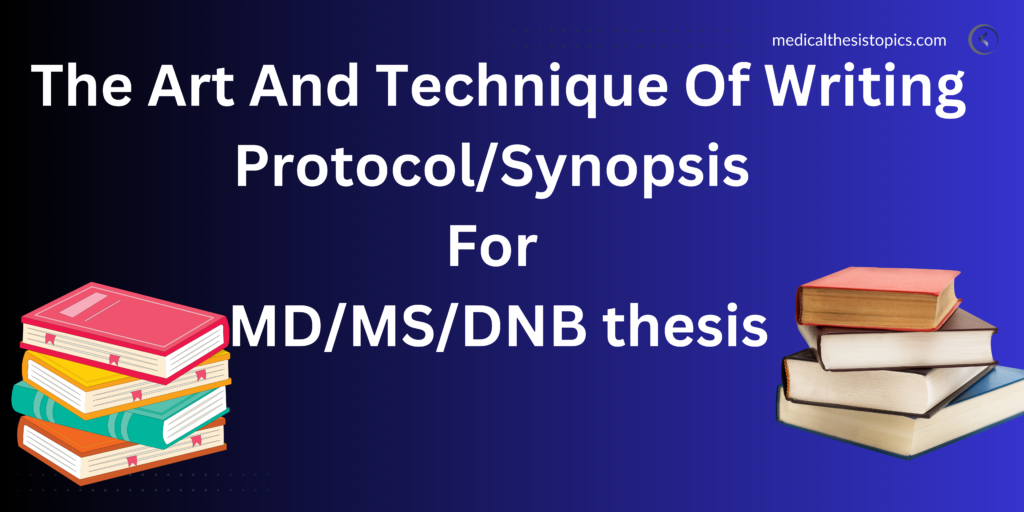
Remember Subscribing to the premium thesis topics not only will enable you to browse through premium thesis topics but also you will get access to online guidance about synopsis writing, sample size calculation, inclusion and exclusion criteria and guidance throughout thesis writing. In case you dont subscribe still do not hesitate to contact me for guidance.
Thesis Topics for MD/MS and DNB
It’s a junior resident’s nightmare to search for appropriate thesis topics for MD/MS and DNB. While we all know the first year of residency in any medical college is a period when the junior residents are all overburdened with work. It’s not uncommon to see Junior Residents not getting time to eat, shave or even take bath. In this demanding period looking for an appropriate thesis topics for MD/MS and DNB is another task that needs to be performed by Junior Residents. Many times Junior Residents end up selecting topics that they later regret selecting.
In this regard i vividly remember my co-resident. When i joined MD radiology one of co-resident took a topic on cardiac MRI in thalassemia. Cardiac MRI facility was not available in our institute and then for this she had an agreement with a private diagnostic center for cardiac MRI at concessional rates. After some days the management of that private diagnostic center changed and new management refused to do cardiac MRI at concessional rates and all hell broke. She suffered a lot because she didn’t think at the time of choosing thesis topic that cardiac MRI was not available in our department. So carefully choosing a thesis topic is a must.
The topics for MD/MS and DNB should be important but not difficult. And for this you have to go through at least 400-500 thesis topics for MD/MS/DNB before selecting one. Its not possible to search for thesis topics in libraries, over the internet, and everywhere else because of shortage of time.
Taking into consideration all these difficulties faced by junior residents we have painstakingly collected more than 50,000+ thesis topics for MD/MS/DNB of all broad specialty subjects. That comes to an average of 3000 thesis topics per subject. And it’s not over here we are continuously updating the list so that as and when new topics emerge on the horizon we will go on adding them.
This website will give you a list of all the relevant thesis topics in one place and it will be very hard for you to find any thesis topic outside this list. If there is a good thesis topic for MD/MS and DNB then it will be on this list. Do check the list of conventional as well as emerging Thesis Topics.
We wish you all the best in choosing appropriate thesis topics for MD/MS and DNB.
You can directly discuss with me on whatsapp regarding a thesis topic. Ill help you not only for selection of a thesis topic but also ill guide you throughout your Journey of writing thesis. I have more than 60 research papers published in my name in various national and international journals and i can guide you if you face any difficulty during writing of thesis. I can help you write synopsis, Review of literature, Statistics and discussion etc.
Please Remember you will not only get a good thesis topic from here but also you will get a mentor throughout your PG residency. Ill always be there to help you.
I have another website where i’ve helped many doctors get their paper published in national and international medical journals. Do check it click here

Synopsis Writing Services
Subject-wise thesis topics for md/ms and dnb.
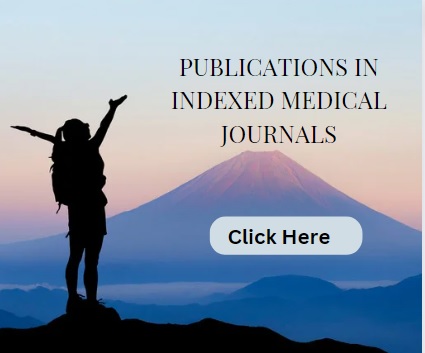
Biochemistry

Microbiology

Pharmacology

Othopaedics

Obstetrics and Gynaecology

Ophthalmology

Anaesthesia

Dermatology

Preventive and Social Medicine
Topic-wise list of thesis topics for md/ms and dnb , anatomy premium bundle -subscribe (1 week access) click here, anatomy free thesis topics.
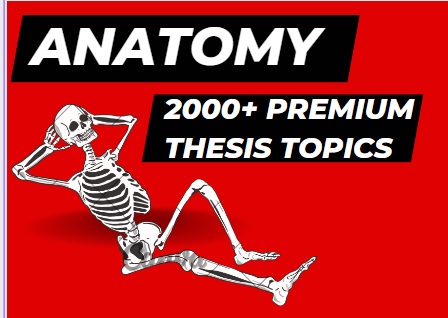
Premium Thesis Topics

Anatomy recent thesis Topics
Physiology premium bundle -subscribe (1 week access) click here, physiology free thesis topics.

Physiology Premium Thesis Topics

Physiology recent thesis Topics
Biochemistry premium bundle -subscribe (1 week access) click here, biochemistry free thesis topics.

Biochemistry Premium Thesis Topics

Biochemistry recent thesis Topics
Forensic medicine and toxicology thesis topics -subscribe (1 week access) click here.

Pathology Premium Bundle -Subscribe (1 week Access) Click Here
Free pathology thesis topics.

Premium Pathology thesis topics
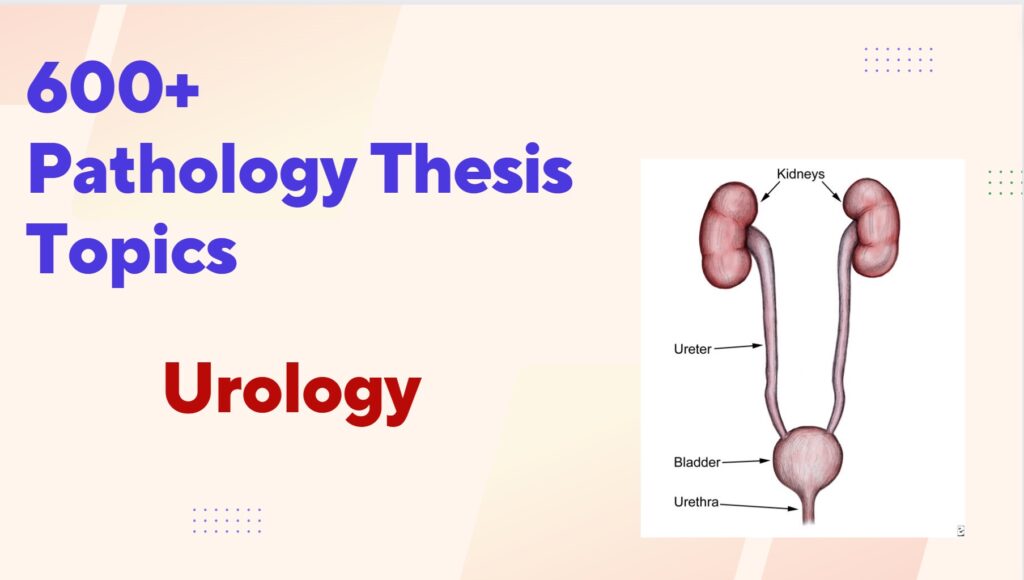
Urology thesis topics

Reproductive system thesis topics
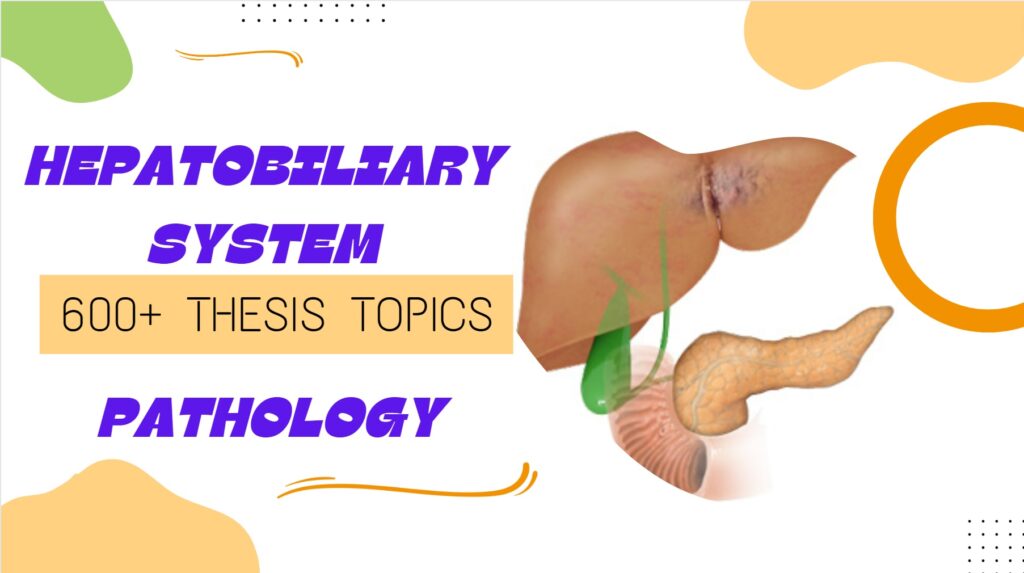
Hepato-biliary thesis topics
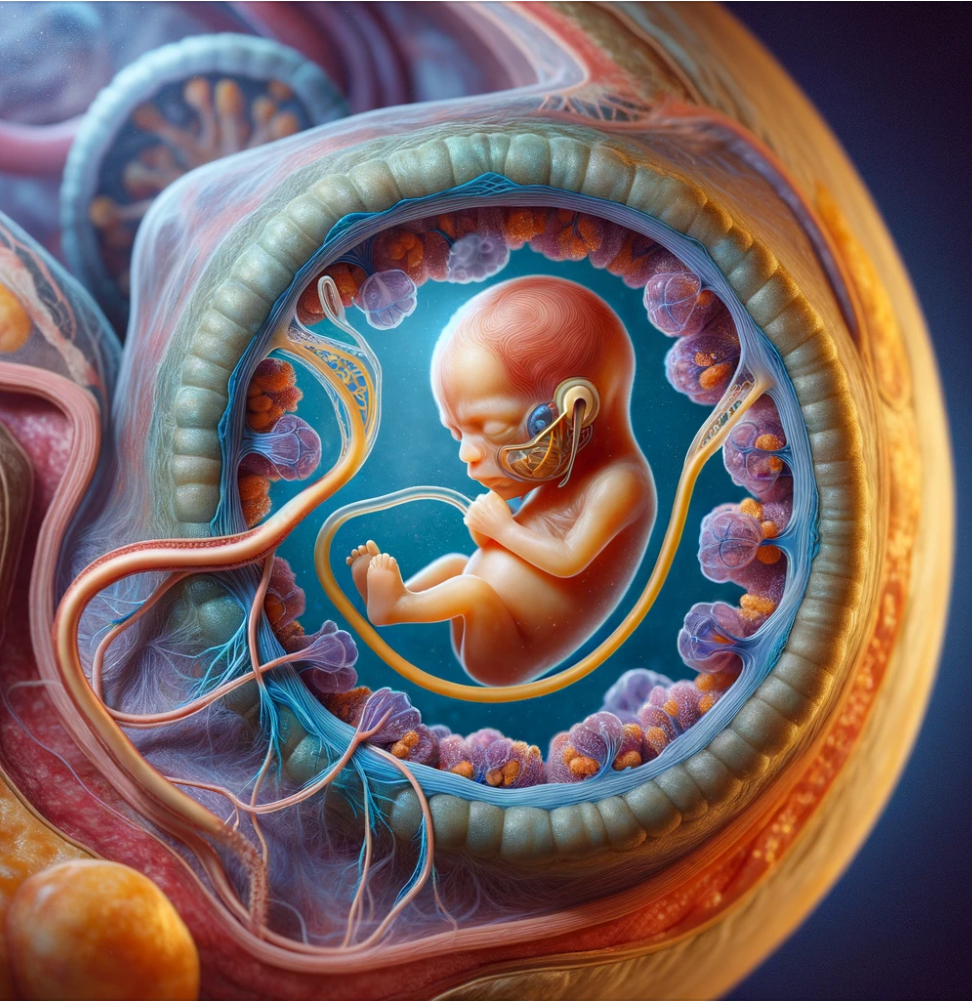
Placental pathologies
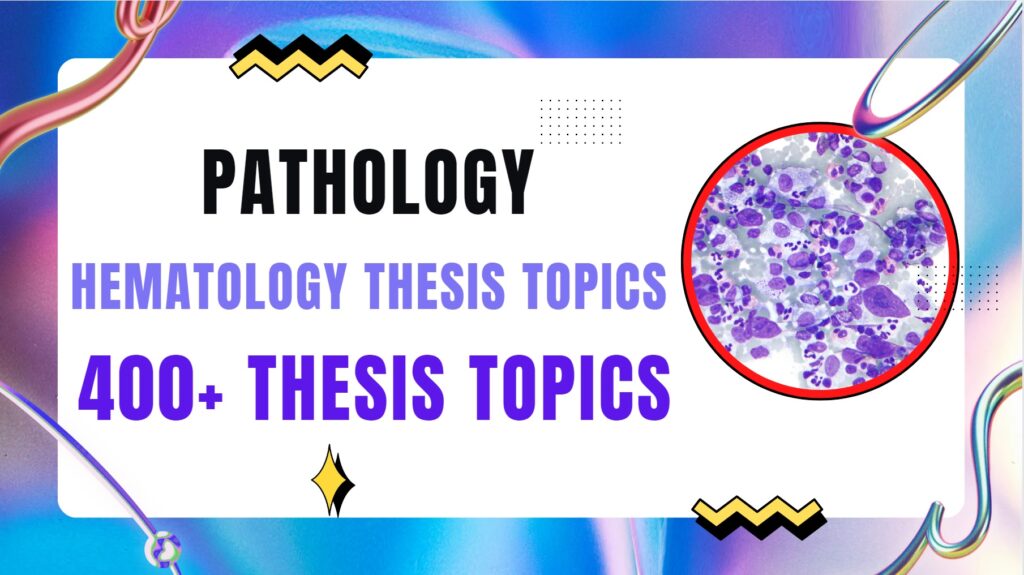

Hematology thesis topics
Pharmacology premium bundle -subscribe (1 week access) click here, pharmacology free topics.

Pharmacology Premium Topics

Pharmacology Recent Topics
Microbiology premium bundle -subscribe (1 week access) click here, microbiology free topics.

Microbiology Premium Topics

Microbiology Recent Topics
General medicine premium bundle -subscribe (1 week access) click here.

Pediatrics Premium Bundle -Subscribe (1 week Access) Click Here

ENT Premium Bundle -Subscribe (1 week Access) Click Here
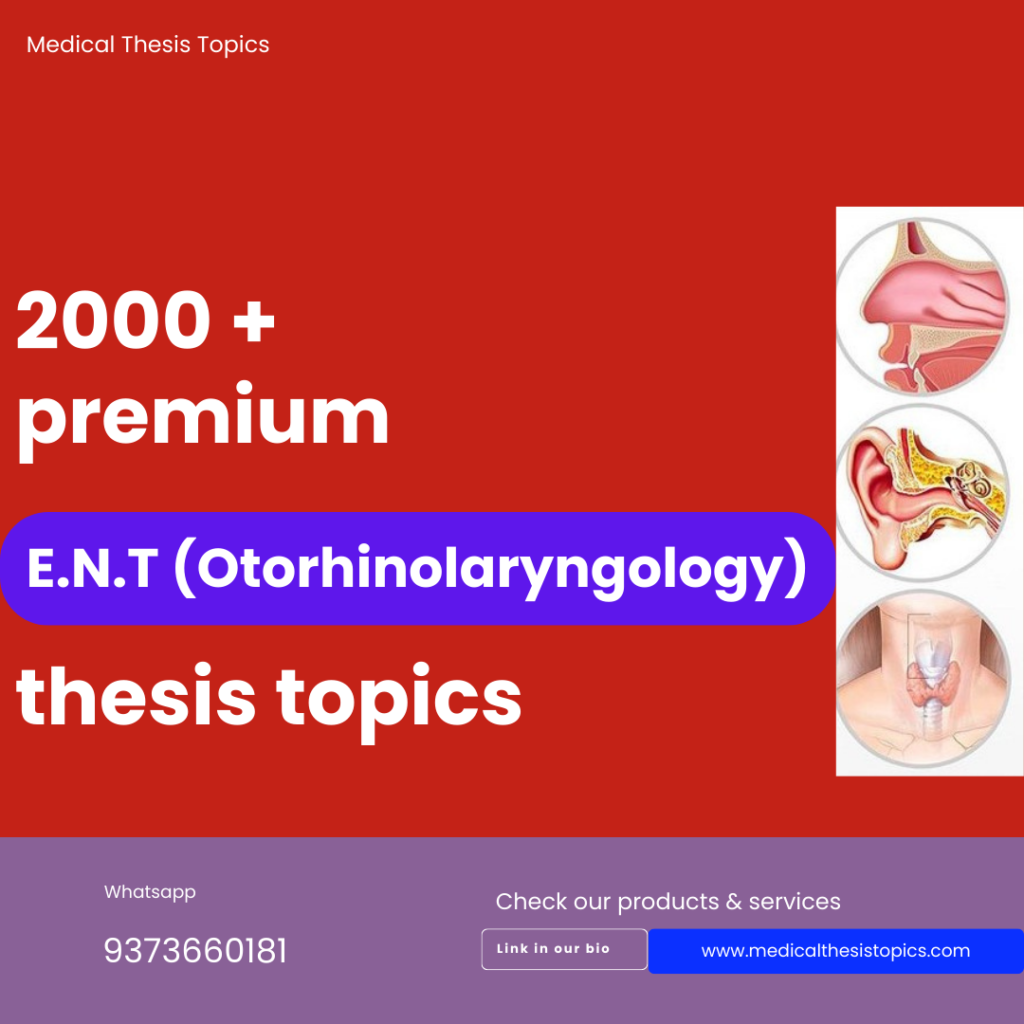
Surgery Premium Bundle -Subscribe (1 week Access) Click Here
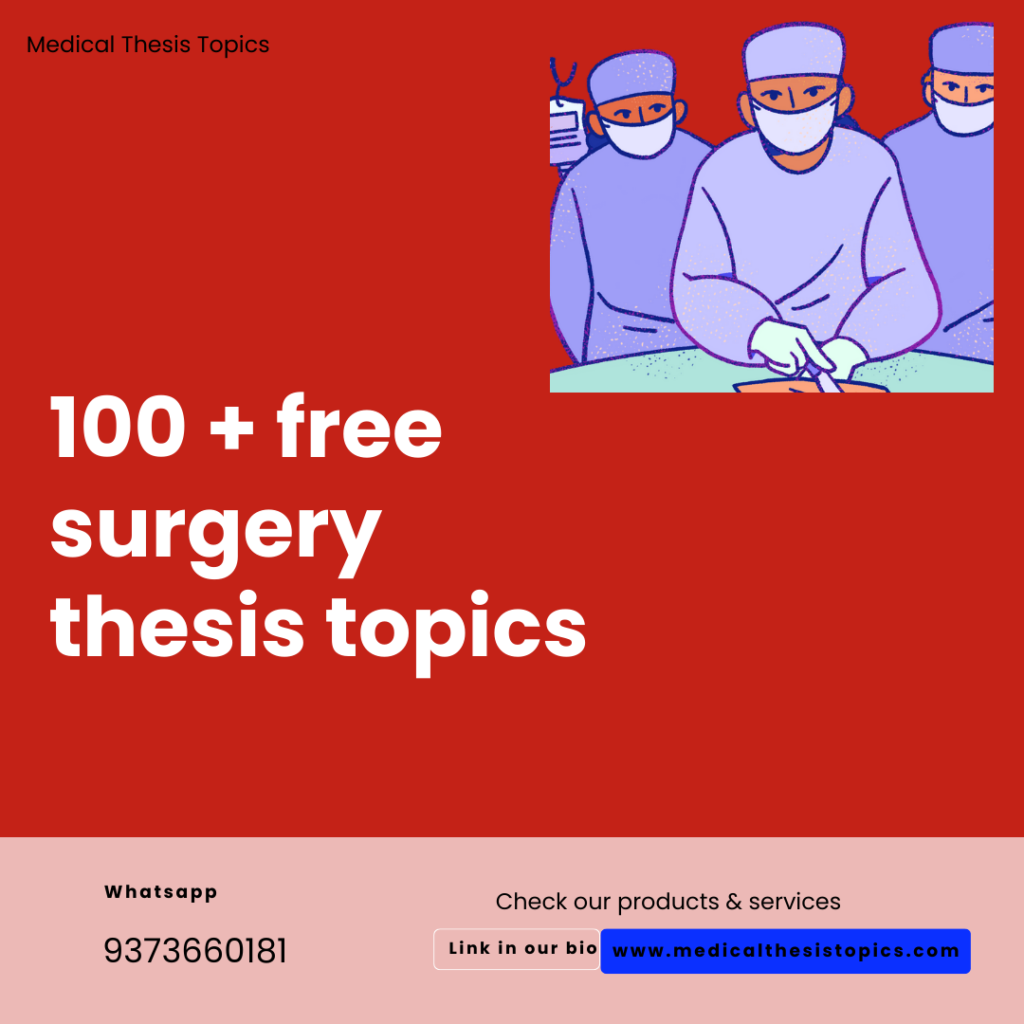
Orthopedics Premium Bundle -Subscribe (1 week Access) Click Here
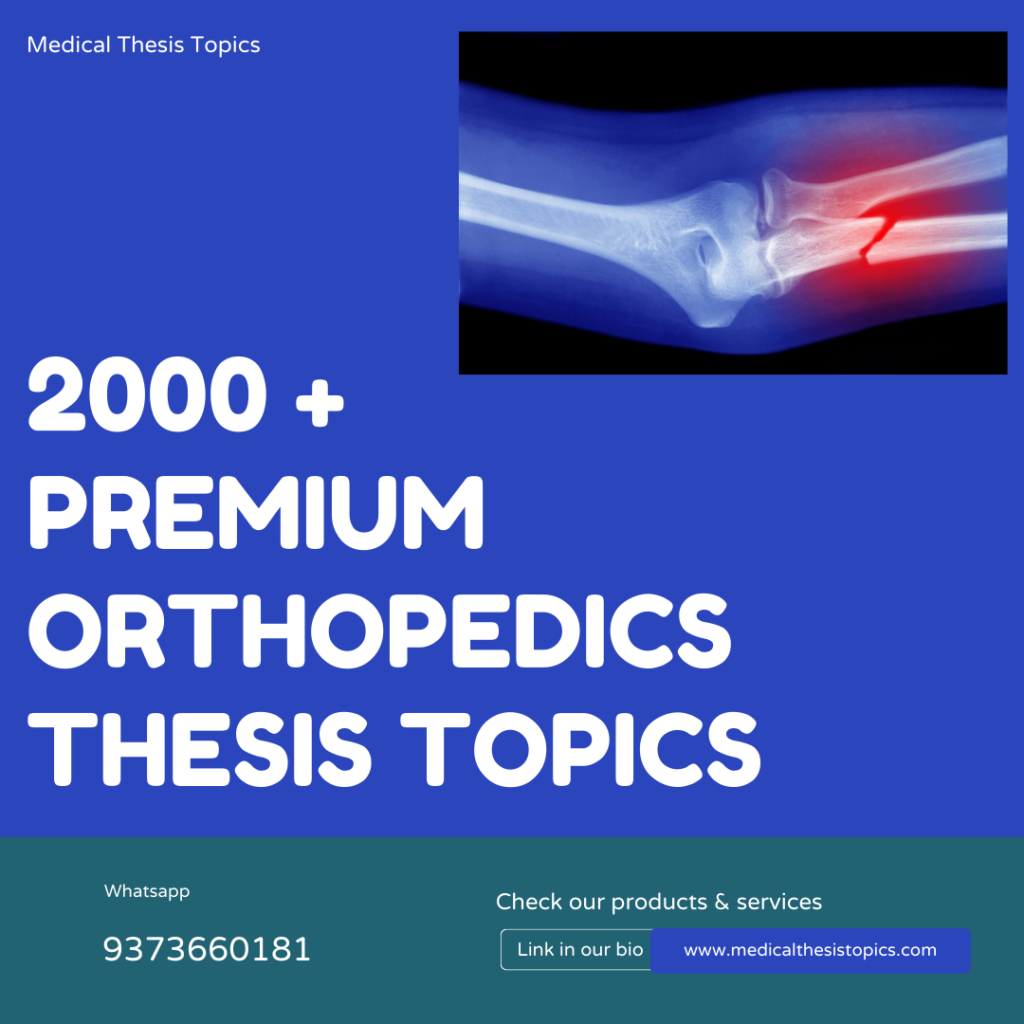
Dermatology Premium Bundle -Subscribe (1 week Access) Click Here

Ophthalmology Premium Bundle -Subscribe (1 week Access) Click Here

Obstetrics And Gynecology Premium Bundle -Subscribe (1 week Access) Click Here

Radiology Premium Bundle -Subscribe (1 week Access) Click Here

Anesthesiology Premium Bundle -Subscribe (1 week Access) Click Here

Psychiatry Premium Bundle -Subscribe (1 week Access) Click Here

Preventive and Social Medicine Premium Bundle -Subscribe (1 week Access) Click Here

Thesis Topics For MDS

Pediatric Dentistry Thesis Topics
Disclaimer!
There are many methods of sample size determination. It is one of the first hurdle when someone starts writing a thesis. I have tried to give simplest way of determination of sample size. You need to show the method to your PG teacher before you include this method in your thesis. First confirm from your PG teacher and then only proceed.
Andersen, Jung & Co. is a San Francisco based, full-service real estate firm providing customized concierge-level services to its clients. We work to help our residential clients find their new home and our commercial clients to find and optimize each new investment property through our real estate and property management services.
- Alzheimer's disease & dementia
- Arthritis & Rheumatism
- Attention deficit disorders
- Autism spectrum disorders
- Biomedical technology
- Diseases, Conditions, Syndromes
- Endocrinology & Metabolism
- Gastroenterology
- Gerontology & Geriatrics
- Health informatics
- Inflammatory disorders
- Medical economics
- Medical research
- Medications
- Neuroscience
- Obstetrics & gynaecology
- Oncology & Cancer
- Ophthalmology
- Overweight & Obesity
- Parkinson's & Movement disorders
- Psychology & Psychiatry
- Radiology & Imaging
- Sleep disorders
- Sports medicine & Kinesiology
- Vaccination
- Breast cancer
- Cardiovascular disease
- Chronic obstructive pulmonary disease
- Colon cancer
- Coronary artery disease
- Heart attack
- Heart disease
- High blood pressure
- Kidney disease
- Lung cancer
- Multiple sclerosis
- Myocardial infarction
- Ovarian cancer
- Post traumatic stress disorder
- Rheumatoid arthritis
- Schizophrenia
- Skin cancer
- Type 2 diabetes
- Full List »
share this!
April 25, 2024
This article has been reviewed according to Science X's editorial process and policies . Editors have highlighted the following attributes while ensuring the content's credibility:
fact-checked
trusted source
Simulation of infant gut makes predictions about optimal milk formula
by Rianne Lindhout, Leiden University

Doctoral candidate David Versluis successfully simulated an infant gut. This is crucial for research on improvements in formula milk. Currently, such research primarily relies on diaper contents, which is not optimal. Versluis defended his doctoral thesis on April 23.
Versluis has uncovered intriguing facts about breast milk . "The milk of the fur seal, an Arctic marine mammal, is super thick. It's like brie or camembert." Versluis shares this with such enthusiasm; this biologist could easily trek through Antarctica like a sort of Freek Vonk. But he's doing something entirely different. He also studied computer science and AI, combining his knowledge to create a simulation of the infant gut. And it's quite good.
Diaper contents as the best available research subject
Nature has excellently regulated the nutrition of baby mammals, but sometimes breastfeeding isn't possible. Nowadays, milk formula based on cow's milk is a good alternative when breastfeeding isn't feasible. However, this formula milk could be improved. "Some newborn babies develop allergies like asthma or skin rashes, for example, which might be alleviated with better milk."
Investigating what happens to that milk in the intestines is quite challenging, Versluis explains. "You can't discourage breastfeeding. In hospitals, you have to find expectant parents who already know they can't breastfeed." And even then, you can't burden those babies and their parents too much. The best available option: "Much of the research is done with diaper contents."
The model predicts the effect on gut bacteria
FrieslandCampina enlisted Professor of Mathematical Biology Roeland Merks to explore a new method of research. Versluis, as his Ph.D. candidate, succeeded in this endeavor. He created a simulation model capable of predicting the effect of varying amounts of different sugar or acid molecules.
The computer program had to simulate the infant gut microbiome as accurately as possible and understand how each bacterium reacts to all substances entering and forming in the gut.
Versluis explains, "The bacteria in the gut don't just consume what enters the gut. They also consume substances produced by other bacteria and, for example, gut mucin, a protective layer produced by the gut itself."
To complicate matters further, an infant's gut is highly dynamic. "An adult gut is already a very complex system, but it's relatively stable. If an adult changes their diet, the composition of their gut bacteria changes. But in a baby, this gut microbiome changes in any case."
Yet, Versluis managed to simulate the infant gut quite well. This was evident when he asked the model to make predictions that were already known to be accurate.
Passing the test
Once the model passed its test, it was allowed to make unknown predictions. "One of those predictions is that the prebiotic milk oligosaccharide 2'-fucosyllactose, a complex sugar, can indirectly stimulate the production of butyrate even with various other bacteria present." This might assist bacteria capable of producing the butyratemolecule.
"That would be beneficial because human gut cells prefer to consume butyrate and become healthier as a result. Together with microbiologists from the University of Cincinnati in Ohio, colleagues are investigating whether these and other predictions are accurate."
Versluis isn't sure yet if he'll continue with (infant) gut simulation. "Modeling bacteria opens up many avenues. You can, for example, simulate bacteria in soil for research into better crop growth. Or in marshes, where we want to understand greenhouse gas formation. Bacteria simulations are also used for sewage treatment or biofuel production."
So, there's plenty to do in this field. However, "The gut is the most complex system. It has the highest density and the greatest variety of bacteria," says Versluis.
Whatever he chooses, Versluis is currently fully immersed in breast milk and complex sugars. "All mammals have milk with complex sugars," Versluis says excitedly, "So they must have evolved early in evolution. There's one exception: fur seals' milk contains no sugars at all. In biology, there are always exceptions."
Explore further
Feedback to editors

Study confirms effectiveness of bivalent COVID-19 vaccine
59 minutes ago

How does aging start? Scientists explain how IgG antibodies are a driving factor

Study reveals emotional turmoil experienced after dog-theft is like that of a caregiver losing a child

Targeting specific protein regions offers a new treatment approach in medulloblastoma
2 hours ago

Study recommends exposing deaf children to sign language before and after cochlear implantation

Study reveals racial disparities in COVID-19 testing delays among health care workers

Study reports new compound that halts replication of COVID by targeting 'Mac-1' protein in cell models

Shoulder surgeons should rethink a common practice, new study suggests

Study finds vitamin D alters mouse gut bacteria to give better cancer immunity
3 hours ago

Food in sight? The liver is ready in minutes: Study shows how adapting sugar metabolism starts in the brain
Related stories.

Gut microbiome: Meet Bifidobacterium breve, keeping babies healthy
Mar 2, 2024

When can my baby drink cow's milk? It's sooner than you think, say researchers
Apr 5, 2024

Infant death linked to contaminated breast pump: CDC
Mar 3, 2023

Infant gut microbes have their own circadian rhythm: Study finds diet has little impact on how the microbiome assembles
Apr 2, 2024

Mom and baby share 'good bacteria' through breast milk
Jul 10, 2020

Compound in breast milk fights harmful bacteria
Oct 10, 2019
Recommended for you

Identifying a new liver defender: The role of resident macrophages
7 hours ago

New study prompts call for considering cholesterol screening earlier in life
Apr 24, 2024

Single-cell analysis reveals mechanisms of a common complication of Crohn's disease

Artificial sweetener has potential to damage gut, finds study

Large study finds children with skin diseases suffer stigma, bullying and depression
Let us know if there is a problem with our content.
Use this form if you have come across a typo, inaccuracy or would like to send an edit request for the content on this page. For general inquiries, please use our contact form . For general feedback, use the public comments section below (please adhere to guidelines ).
Please select the most appropriate category to facilitate processing of your request
Thank you for taking time to provide your feedback to the editors.
Your feedback is important to us. However, we do not guarantee individual replies due to the high volume of messages.
E-mail the story
Your email address is used only to let the recipient know who sent the email. Neither your address nor the recipient's address will be used for any other purpose. The information you enter will appear in your e-mail message and is not retained by Medical Xpress in any form.
Newsletter sign up
Get weekly and/or daily updates delivered to your inbox. You can unsubscribe at any time and we'll never share your details to third parties.
More information Privacy policy
Donate and enjoy an ad-free experience
We keep our content available to everyone. Consider supporting Science X's mission by getting a premium account.
E-mail newsletter

IMAGES
VIDEO
COMMENTS
This list of 50 thesis topics in Ophthalmology will be useful for you - know what to write about and how to do it properly. 1-844-854-5417 [email protected] Academic writing
Demographic and clinical profile of vernal keratoconjunctivitis at tertiary eye care centre in Pune. Dr. A. Gahlot Kotadia. 14. Dr Deepaswi Bhavsar. MS OPHTHALMOLOGY. Prevalence, risk factors and clinical evaluation of computer vision 65 syndrome among medical and engineering students of Dr D Y Patil Vidyapeeth, Pimpri, Pune.
The premium Ophthalmology thesis topics include list of 4000+ premium and updated Ophthalmology thesis topics as well as recent Ophthalmologytopics which has been published in various national and international Ophthalmology journals. Though Ophthalmology thesis topics can be searched online and for this purpose various Ophthalmology journals ...
title of the dissertation duration (from-to) 1: dr mehak bhutani . dr. smitha. k s: correlation of different phases of cvi in children aged 1 to 4 years with mri: a one year cross sectional study. 2021 - 2024: 2: dr keerti m naik . dr. s. c. bubanale: ocular associations of metabolic syndrome at tertiary health care centre - a cross ...
Ophthalmology Study Topic Checklist. November 2, 2021. Check out a new resource I've created - a checklist that covers over 3000+ topics in ophthalmology, with page references from the latest editions of the Basic and Clinical Science Course, Review of Ophthalmology, and Kanski's Clinical Ophthalmology! If you're having a hard time ...
This thesis should be an original contribution toward the advancement of the science and art of ophthalmology. A thesis is more than a routine scientific paper. ... Selection of Topic. A thesis is a position or proposition, advancing an original point of view and supported by research or argument. ... Macsai MS, Mannis MJ, Huntley AC. Acne ...
165 views. An exciting new journal which advances our knowledge of the mechanisms underlying eye diseases and disorders, to aid in diagnosis and best management, thereby aiming to prevent visual loss.
OPHTHALMOLOGY. S. No. Plan of Thesis (Year 2008) Comparative study of macular photocoagulation, assisted by intravitreal triamcinolone versus bevacizumab, in diabetic macular edema with serous macular detachment. 2. Comparative analysis of macular structure and function in cases of retinal detachement operated by scleral buckling or paras plana ...
100 Ophthalmology thesis/dissertation topics for MD/DNB. More than 100 high quality and recent thesis topics to choose from for Post Graduate medical student pursuing MD/MS or DNB ophthalmology. Not only thesis topics but also we provide help in writing thesis including review of literature, Statistics and discussion along with plagiarism check.
ms (ophthalmology) title (plan of thesis) (session 2016-2019) page 1 of 2 s.no. title (plan of thesis) 1. a study of ocular changes in patients on long term treatment with hydroxychloroquine in a tertiary care hospital. 2. a comparison of visual and anatomical outcome between ranibizumaband aflibercept in treatment of choroidal neovascular ...
Election to the AOS is intended for the present or future leaders of American Ophthalmology, and membership requires the candidate to demonstrate scholarship in the form of a thesis. This thesis should be an original contribution toward the advancement of the science and art of ophthalmology. A thesis is more than a routine scientific paper.
The Subscription Will Give You access to. 1. 2000 + Premium Ophthalmology thesis Topics. 2. 400+ Thesis Topics on Corneal Diseases. 3. 300+ Thesis topics on Cataract. 4. 250+ Thesis topics on Scleral Pathologies. 5. 300+ Thesis topics on Glaucoma. 6. 200+ Thesis Topics on Macular Disorders. 7. 400+ Thesis Topics on Retianl and Choroidal ...
The following are thesis topics for MS Ophthalmology done at Madras Medical College, Chennai under The Tamil Nadu Dr. M.G.R Medical University, Chennai done after the year 2005
Ophthalmology thesis material. 1. The Lens Opacities Classification system 3. Lens opacification scales are standardized systems used in ophthalmology to classify and describe the degree and types of opacities in the eye's crystalline lens, particularly in cases of cataracts. These scales help clinicians and researchers assess the severity ...
Topic of thesis 1 Dr. Palak Garg MD Radiotherapy 31/5/2017 To evaluate the compliance and tolerability in patients of head and neck cancer treated with concurrent chemoradiotherapy using two different chemotherapeutic regimens 2 Dr. Rubble MS Ophthalmology 31/5/2017 Comparison of central corneal thickness measurement by
TRAINING PROGRAMME FOR MS IN OPHTHALMOLOGY Preamble: The purpose of PG education is to create specialists who would provide high quality ... from the material of this thesis. B. Affective Domain: 1. Should be able to function as a part of a team, develop an attitude of cooperation with colleagues, and interact with the patient and the clinician ...
Create a spot-on reference in APA, MLA, Chicago, Harvard, and other styles. Consult the top 19 dissertations / theses for your research on the topic '1113 Ophthalmology and Optometry.'. Next to every source in the list of references, there is an 'Add to bibliography' button.
1. A Study of Cataract Surgery, Its Complications and Visual Outcome in Diabetics. Sep 2006. 2. A Clinical Study of Uveitis in Children and Adolescents. Sep 2006. 3. Post Operative Astigmatism Following extracapsular Cataract Extraction and Small Incision Cataract Surgery - A Comparative Study. Mar 2007.
How to prepare for DNB MS Ophthalmology theory exam. Covers the basics of all the important topics in the subject ideal for postgraduate exit examinations. Includes recent years' solved question papers. Arranged in a reader-friendly bulleted format, enriched with flowcharts and diagrams, that is easy to retain and reproduce in exams.
Ophthalmology thesis topics. List of available thesis topics for instant download. Contact by whatsapp 9087747888. PREPGUIDANCE is the largest and fastest growing online community of professionals and reviewers.A directory of privileged knowledge reviews and guidance for those who are preparing for all spheres of life and learning.
More than 70,000 thesis topics for MD/MS and DNB at one place. 3000+ to 7000+ thesis topics for each specialty of medical sciences. ... Ophthalmology. Anaesthesia. Psychiatry. Dermatology. Preventive and Social Medicine. Topic-Wise List OF Thesis Topics For MD/MS AND DNB ...
EssayBot is an essay writing assistant powered by Artificial Intelligence (AI). Given the title and prompt, EssayBot helps you find inspirational sources, suggest and paraphrase sentences, as well as generate and complete sentences using AI. If your essay will run through a plagiarism checker (such as Turnitin), don't worry.
Ms Ophthalmology Thesis Topics. You may be worried that your teacher will know that you took an expert's assistance to write my essay for me, but we assure you that nothing like that will happen with our write essay service. Taking assistance to write from PenMyPaper is both safe and private.
Versluis defended his doctoral thesis on April 23. Versluis has uncovered intriguing facts about breast milk . "The milk of the fur seal, an Arctic marine mammal, is super thick.